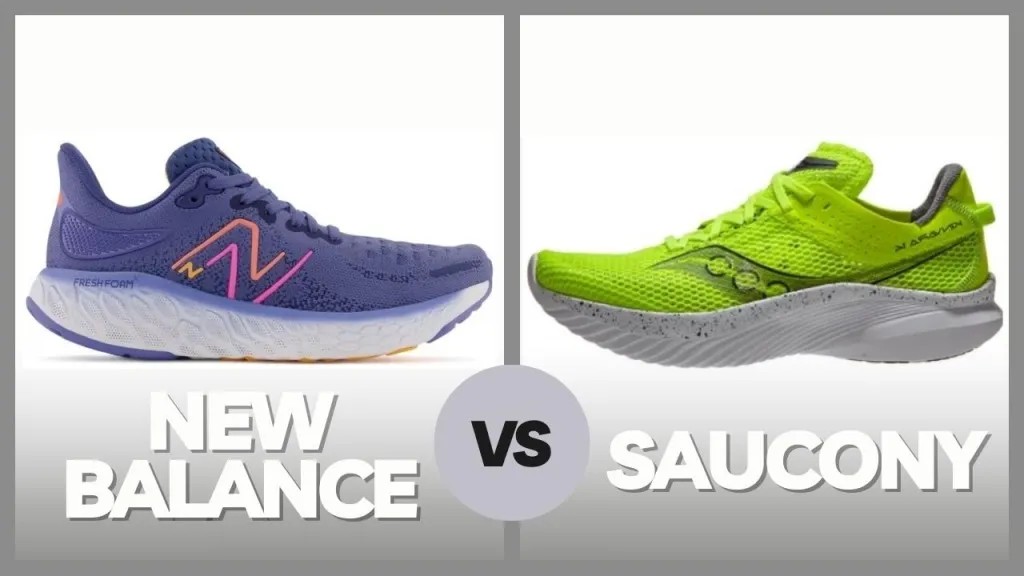Saucony and New Balance are top running shoe brands known for quality and variety. But which brand fits you better? This guide breaks down the key differences in fit, features, and popular models to help you choose the perfect shoe.
Both brands offer shoes for various running styles and foot types, catering to both casual runners and seasoned marathoners. Let’s dive into a detailed comparison.
Saucony vs. New Balance: Key Differences in Fit
While both brands offer excellent running shoes, their fit differs significantly:
Saucony:
- Generally fits narrower feet with a smaller toe box.
- Offers a wide range of heel-to-toe drops, from 4mm to 12mm.
- Known for lightweight shoes prioritizing comfort and flexibility.
New Balance:
- Offers wider shoes than most brands, catering to various foot widths.
- Often features a thicker midsole for enhanced stability.
- Provides a more structured and supportive feel.
Feature Comparison: Saucony vs. New Balance
Beyond fit, several key features distinguish these brands:
Durability
Both brands offer comparable durability:
- Saucony: Most models last around 400 miles, with racing shoes like the Endorphin Pro lasting closer to 200 miles.
- New Balance: Shoes typically last between 300-500 miles, depending on usage.
Sizing
- Saucony: Runs true to size but caters to narrower feet. Their lower heel-to-toe drops often appeal to distance runners.
- New Balance: Offers a wide range of widths, including extra narrow (2A) and wide options. Their shoe numbering system indicates the shoe type (stability, cushioning, etc.).
Cushioning
- Saucony: Primarily uses PWRRUN foam, which is lighter and more flexible than traditional EVA foam, providing a springy feel.
- New Balance: Utilizes Fresh Foam and FuelCell foam, offering lightweight cushioning and responsiveness. FuelCell is nitrogen-infused for added softness.
Stability
- Saucony: Employs less aggressive stability features, focusing on increased stack height and a medial post for subtle support.
- New Balance: Offers inherent stability due to a wider base and utilizes features like the S Curve and Ultra Heel for enhanced support.
Popular Model Comparison
Let’s compare top models from each brand across different categories:
Stability Shoes
- New Balance Fresh Foam 860: Offers motion control and responsiveness with a lighter design, using Fresh Foam X and an Ultra Heel for secure support.
- Saucony Guide: Provides stability through a supportive upper and a less aggressive medial post, maintaining a cushioned ride.
Neutral Shoes
- New Balance Fresh Foam 880: A dependable daily trainer with a wide toebox, ample cushioning, and a hint of stability.
- Saucony Ride/Kinvara: The Ride offers cushioned support for longer runs, while the Kinvara prioritizes a lightweight and natural feel with a lower heel drop.
Cushioned Shoes
- New Balance Fresh Foam 1080: A max-cushioned shoe ideal for long runs, featuring a wider base for added stability.
- Saucony Triumph: Known for its plush PWRRUN cushioning and comfortable fit, suitable for long distances and recovery runs.
Trail Running Shoes
- New Balance Fresh Foam Hierro: Offers Fresh Foam cushioning with micro-traction lugs suitable for road-to-trail transitions and mild trails.
- Saucony Peregrine: A versatile trail shoe with excellent traction for various terrains, featuring a lower stack height for enhanced stability.
Carbon Fiber Plate Shoes
- New Balance FuelCell Super Comp Elite v4: Designed for long-distance racing, this shoe features a thick layer of peba foam and a carbon fiber plate for speed and responsiveness.
- Saucony Endorphin Elite: Combines lightweight foam with a carbon fiber plate for a propulsive ride, ideal for half and full marathons.
Conclusion: Finding the Right Fit
Ultimately, the best shoe depends on your individual needs and preferences. Consider your foot width, desired heel-to-toe drop, and cushioning preferences. Try on different models from both brands to determine which fits your foot best and provides the support and comfort you need. Remember, rotating your running shoes can also help prevent injuries and extend the life of your shoes.

